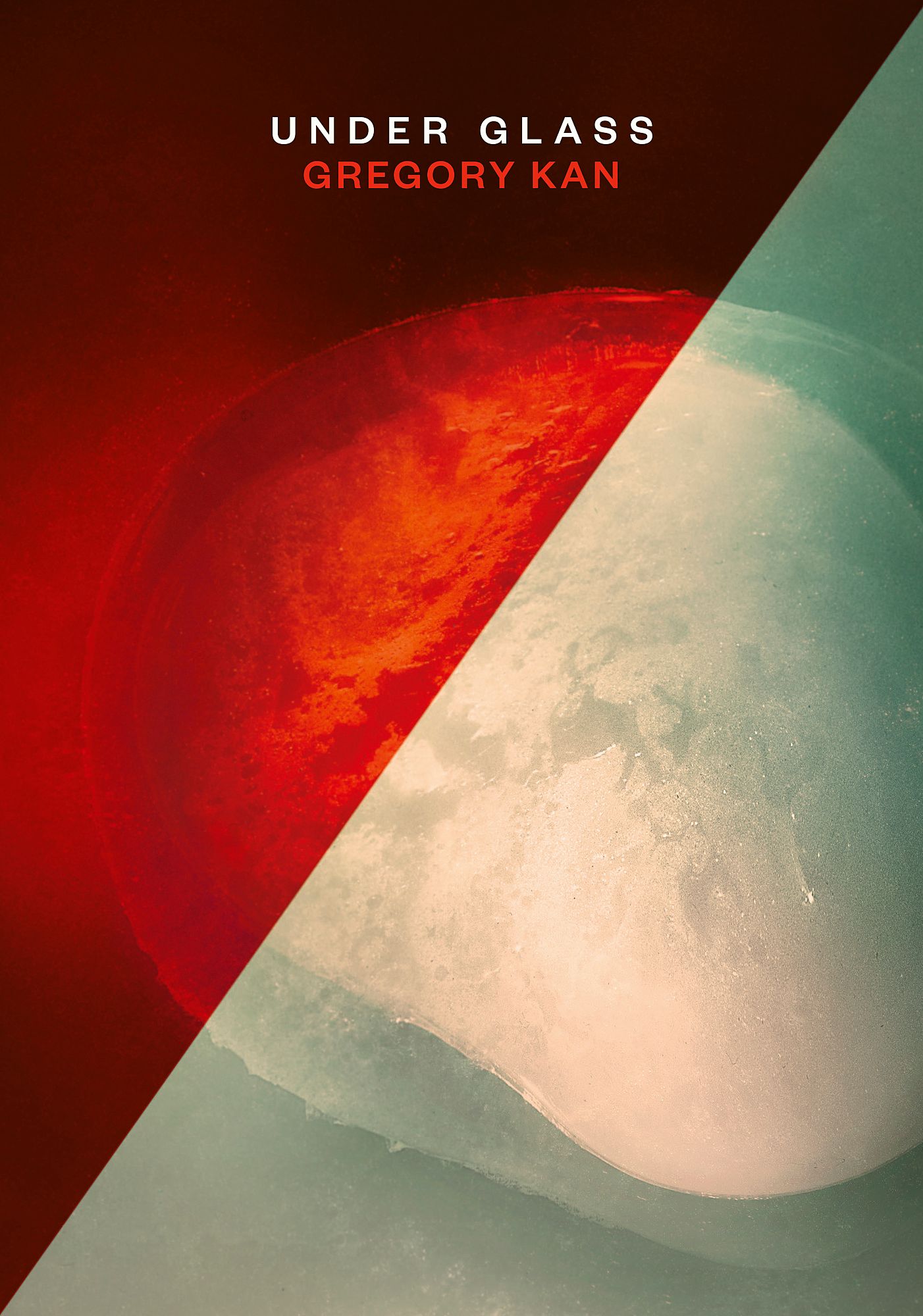Earnest but Elusive: A Review of Under Glass by Gregory Kan
Gregory Kan thrives amid self-imposed constraints in his second poetry collection – but also tests the reader’s patience for abstracted gravitas. Hannah Newport-Watson reviews.
Gregory Kan thrives amid self-imposed constraints in Under Glass – but also tests the reader’s patience for abstracted gravitas. Hannah Newport-Watson reviews.
It’s common to talk about the ‘emotional landscape’ of a book. Gregory Kan’s second poetry collection Under Glass transforms that figure of speech into something more – and yet, not entirely – literal. A series of prose poems unfolds in a landscape described as if it were a real place, with a river, a “colossal jungle” and ground that is “dry and sandy”. We move cinematically through the landscape – to a house, to the coast, to a lighthouse like a “tiny finger thrust up against the horizon”. It is an ominous, searching journey into uncharted territory reminiscent of Joseph Conrad’s Heart of Darkness, which Kan cites as a key source of inspiration.
Despite imagery that conjures a physical landscape, a dream-like, hyperreal quality prompts us to reserve a good measure of disbelief. We know that we are not in a literal place at all; we are deep in a finely rendered metaphor-world. Chief clues to this are recurring references to “the other sun”, also called “the second sun”, a morphing device that is by turns “a house made of many doors”, “the immovable neck of the world”, “a dark seed in my palm” and “a vanishing point I move towards”.
The second sun appears first a guide, then an omen and, increasingly, a restless and uncertain metaphor. In one of the last poems it cannot be fixed as one thing, even for the brief moment of a stanza: “It could be a dark window … It could be a place I can imagine but never reach.” “The crystal … does not contain but transposes,” wrote Clark Coolidge in The Crystal Text, another key source for Kan. Like Coolidge’s crystal, the second sun is a prism for the poet’s own thoughts. Of course, there is an element of poetic ego here – a mind fascinated by its own depths.
Under Glass is a book of dualities. It seems strangely counterintuitive to describe a collection of poetry as ‘formal’ when it comprises solely prose poems and free verse. But formal best describes the book’s adherence to a simple yet effective bifold structure: the short, narrative prose poems, which Kan refers to as the “lighthouse sequence”, alternate with slightly longer pieces in free verse. The deliberate absence of titles invites the reader to devour the book as a seamless whole.
If the book were indeed a painting, it would be a Kushana Bush – precise, neat, carefully composed and highly figurative – but ultimately unsettling, with the effect that it feels allegorical
The formality and simplicity of the structure are echoed by the language Kan employs. In painterly terms, the vocabulary is best described as a limited colour palette: deliberate, controlled, plain. Sentences are frequently short and uncomplicated. Repetition and subtle variations are employed to heightened effect. If the book were indeed a painting, it would be a Kushana Bush – precise, neat, carefully composed and highly figurative – but ultimately unsettling, with the effect that it feels allegorical.
The duality of the book’s prose-and-verse structure is also echoed by thematic dualisms: “the ordinary sun” against “the second sun”; what is real against what is dream or metaphor; what is interior against what is exterior; what is self and what is the other. The presence of a distinct other, addressed directly as “you”, is a constant in the free-verse pieces. Little is revealed about the “you”, so much is left open to the reader’s interpretation. At times, the “you” is present, like a lover, and at other times distant, like an ex-lover, or perhaps an estranged friend. The dynamic is too shifting for a singular figure; instead a series of individuals appears to be neatly conflated into the poetic “you”. But the conflation itself serves a purpose. The individual or individuals behind the “you” are not important to these poems. What is important are the dynamics at play in the intimately charged space between two people: the self and the other.
The individual or individuals behind the “you” are not important to these poems. What is important are the dynamics at play in the intimately charged space between two people: the self and the other.
One thing Kan has in common with other contemporary New Zealand poets of his generation is a renewed confidence to embrace emotional writing. But while other contemporaries of Kan’s – Hera Lindsay Bird being a notable example – deploy humour and irony to offset the delivery of their sincere sentiments, Kan uses neither. Aside from the duality of its structure, Under Glass is characterised most strongly by its emotional earnestness. It takes itself seriously.
However, the apparent candidness with which Under Glass explores the narrator’s inner life and closest relationship (or relationships) is curiously illusory. Look closely and the book is elusive, almost evasive, about specific events, places and characters. Phrases like “what happened”, “the things that are really big and close”, “the things I loved”, “the thing inside me”, “things don’t happen because they mean something”, “I survived it happening”, “so many bad things”: all are portentous, signalling events with consequence, while deftly avoiding the revelation of tangible information. Even where the “thing” seems more mundane – as in, “I’m trying to stop doing the thing that you sometimes complain about” – still we are denied specifics. Once noticed, this technique becomes hard to ignore. The word “thing” appears no less than 29 times in the book – or 62 times if you count “something”, “nothing”, “anything” and “everything”.
Perhaps Kan is a devotee of Emily Dickinson’s adage: “Tell all the truth but tell it slant.” Don’t be too explicit; don’t reveal too much too directly – it’s an enduring and effective maxim to avoid writing bad, didactic poetry. A less generous interpretation, however, would be that Kan shies away from naming the events and “things” that sit underneath the surface of the poems out of fear that they would disappoint the reader; that by bringing them closer into view some of their potency and gravitas would be lost. It’s a risky approach, if so, because our patience for abstracted gravitas eventually reaches its natural limit. So often in poetry, the transcendent and the universal are found in the specific, and this book is not generous with specificity. Readers returning to these poems a second or third time may come to find this slippery obliqueness a little unsatisfying.
But if Under Glass is earnest and elusive, it is also exquisitely written. Kan thrives amid self-imposed constraints. The precise execution of both structure and language is what makes Under Glass a memorable collection. I read the whole book aloud to myself without stopping – the second sun held me in its glare and I couldn’t look away.
This piece is presented in an editorial partnership with
New Zealand Review of Books Pukapuka Aotearoa.


